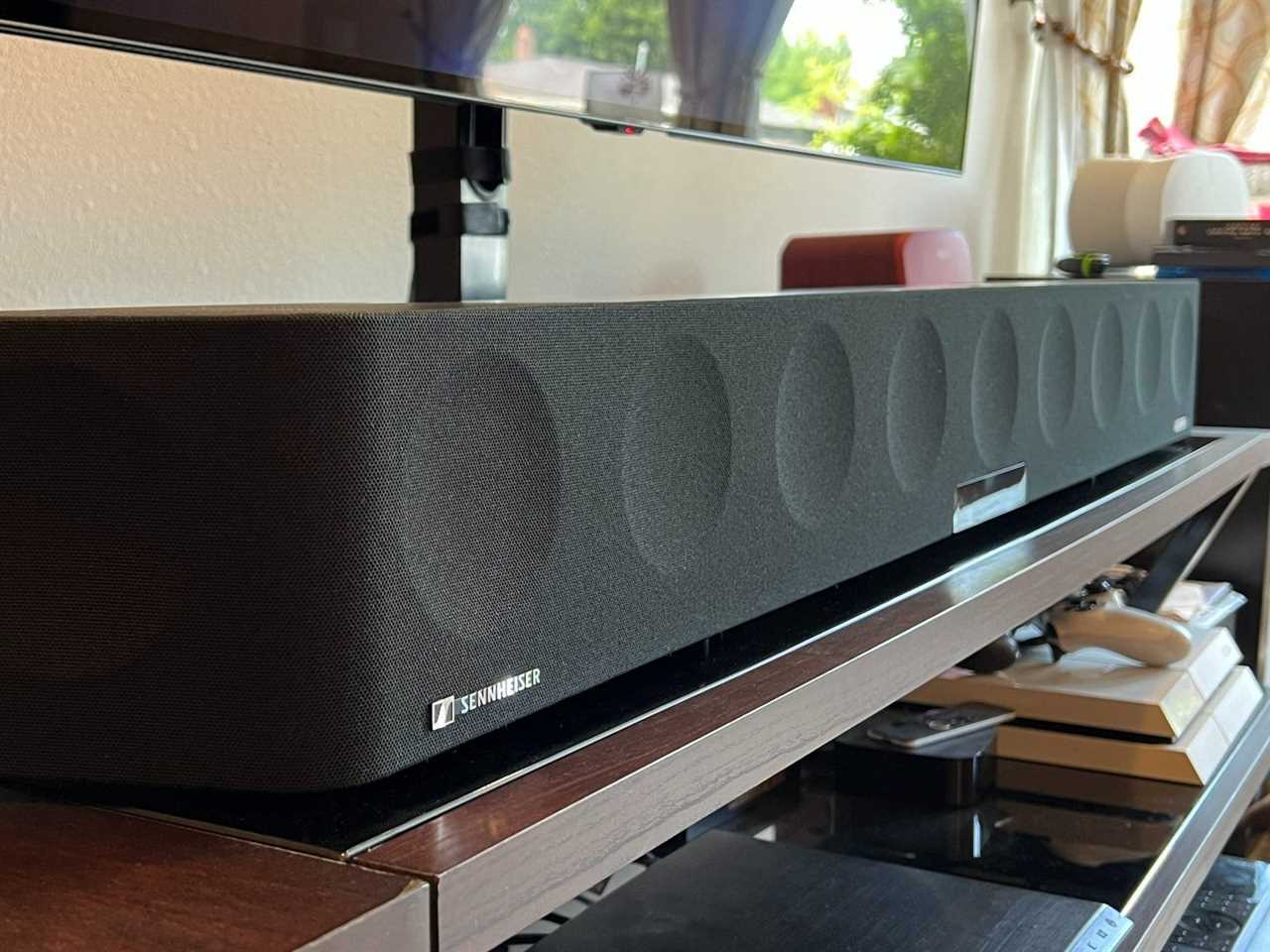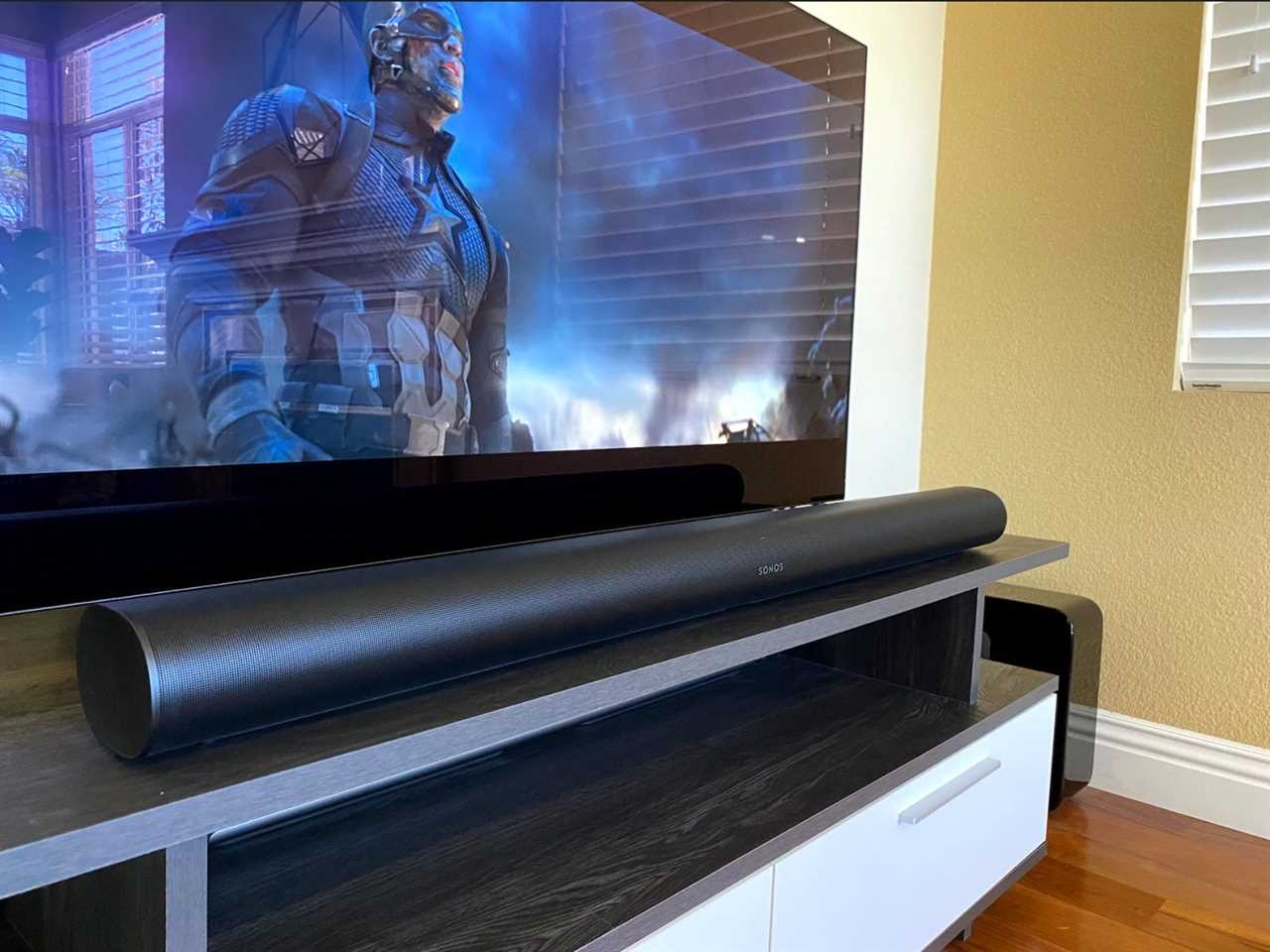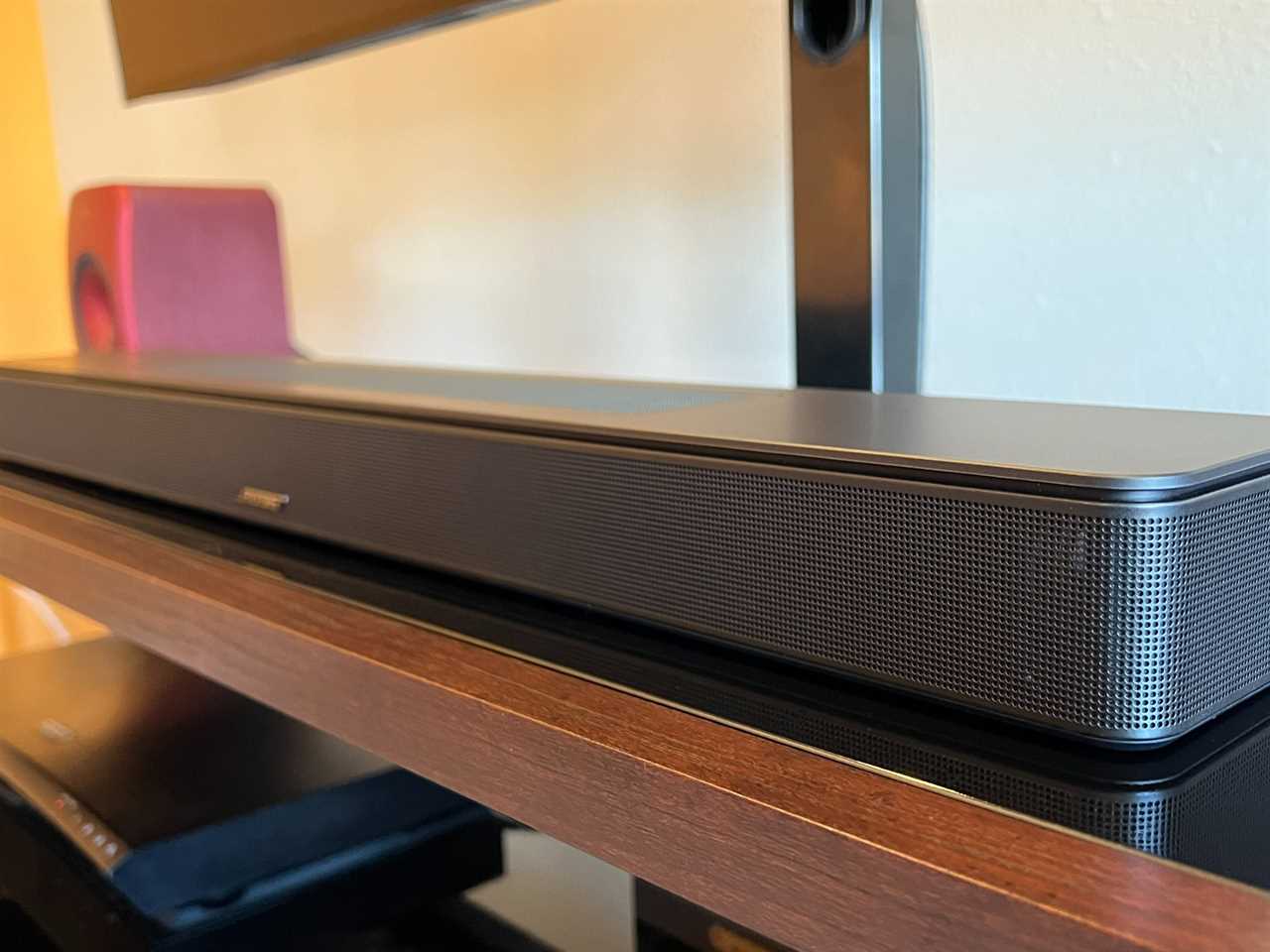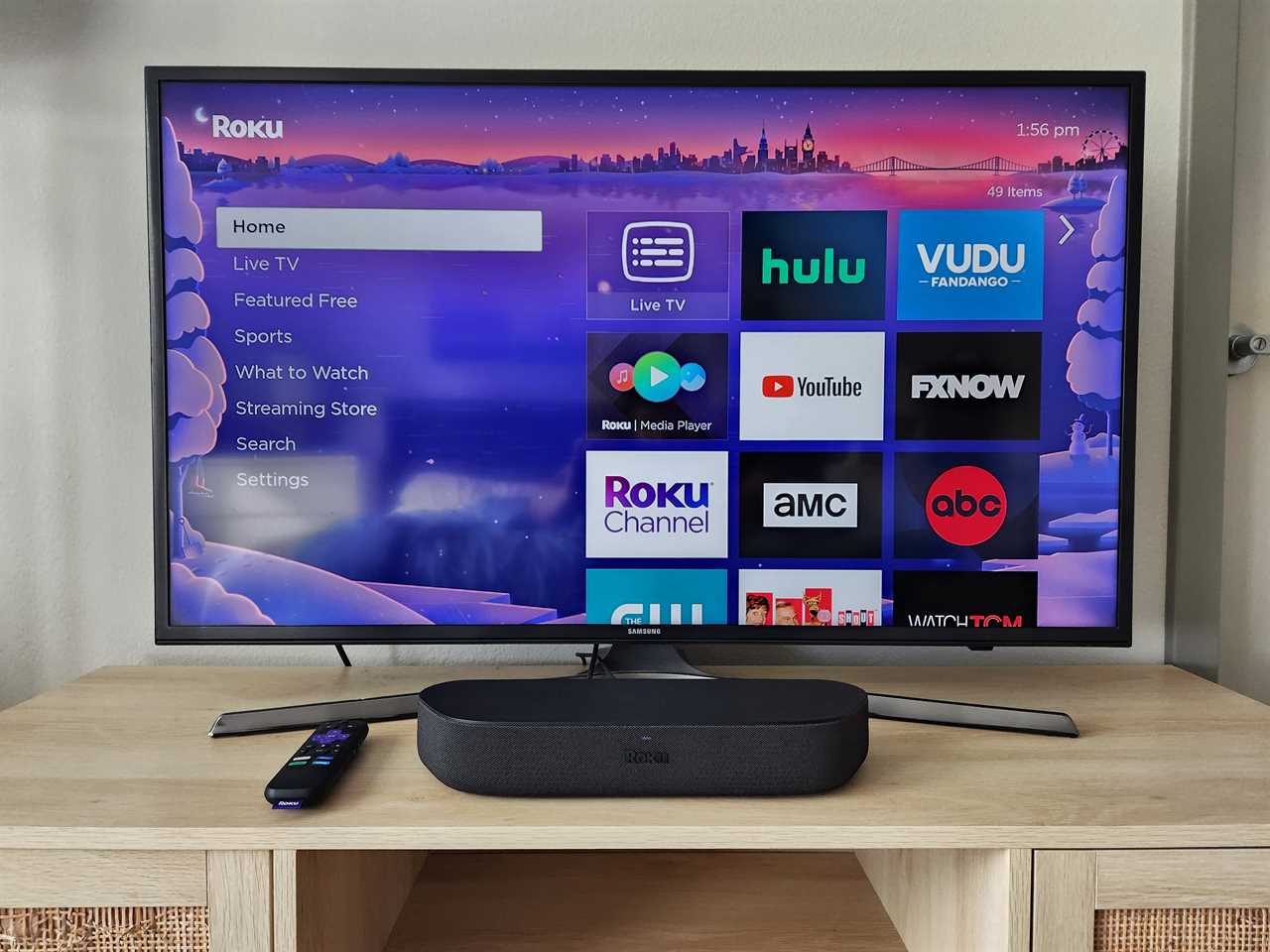When you buy through our links, Insider may earn an affiliate commission. Learn more
Business Insider
The best soundbars can deliver a simple and convenient upgrade for your TV's audio setup. Even top TVs often have wimpy built-in speakers that lack depth and clarity. A good soundbar can be a total game changer, providing cleaner dialogue and deeper bass.
After testing and researching several popular models, we've picked the nine best soundbars you can buy right now. The Yamaha YAS-209 is our top recommendation for anyone who wants a great all-around audio system with good sound quality and a dedicated subwoofer. Buyers on a budget who want something more compact should consider the Vizio V-Series. This model doesn't have a separate subwoofer, but it still offers a nice step up from most TV speakers.
Below, you can check out all of our picks for the best soundbars of 2024. We have options for every price range and type of user, from entry-level stereo models to high-end systems with Dolby Atmos surround sound.
Our top picks for the best soundbars
Best overall: Yamaha YAS-209 - See at Amazon
Best high-end model: Sennheiser Ambeo Soundbar Max - See at Amazon
Best for budget shoppers: Vizio V-Series V21d-J8 - See at Walmart
Best midrange Dolby Atmos system: Vizio Elevate 5.1.4 Channel Soundbar - See at Amazon
Best premium Dolby Atmos system: Samsung HW-Q990B - See at Amazon
Best all-in-one option: Sonos Arc - See at Amazon
Best smart bar: Bose Smart Soundbar 600 - See at Amazon
Best for gaming: Sony HT-A7000 - See at Amazon
Best with video streaming: Roku Streambar - See at Best Buy

Yamaha
The YAS-209 has been around for a few years, but its perfect blend of solid audio quality, ease of use, and affordable pricing make it the best soundbar for most people. This is the type of space-saving audio option that a lot of shoppers think of when looking for a soundbar, and it makes for a great upgrade to built-in TV speakers.
The system includes a 36-inch soundbar unit and a wireless subwoofer for dedicated bass. The 2.1-channel hardware delivers stereo playback but also has DTS Virtual:X processing for a simulated surround sound effect. It's not as convincing as pricier virtual surround systems, but it does a decent job. With or without virtual surround, the system provides clear and balanced sound for a wide array of audio content.
The YAS-209 connects to your TV using its HDMI ARC port, and the soundbar has a handy HDMI-in port that supports 4K HDR video passthrough (but not Dolby Vision) from a connected device, like a gaming console or Blu-ray player. An optical audio port is also featured for older TVs without HDMI ARC, and you can wirelessly stream music via Bluetooth or WiFi.
The YAS-209 even includes integrated support for Amazon Alexa thanks to built-in microphones, enabling hands-free control for functions like volume. All of this at such a low price is what keeps the YAS-209 at the top of the list for so many soundbar buyers and reviewers alike, making it one of the best soundbars you can buy.

Ryan Waniata/Insider
If you want an absolutely killer listening experience without the hassle of setting up multiple speakers, look no further than the Sennheiser Ambeo Soundbar Max. This high-end soundbar is loaded with premium components and innovative software to create an unparalleled virtual surround sound experience from a single audio component.
The Ambeo Max is a beast of a soundbar, coming in at 50 inches wide and 40 pounds which can make it tricky to fit in some living room setups. But its hefty design enables Sennheiser to pack in five tweeters, six four-inch drivers at the front and sides, and a pair of 3.5-inch up-firing drivers. The up-firing and side-firing drivers bounce audio off your ceiling and walls to make it sound like effects are coming from all around you in a full 5.1.4-channel configuration.
The bar creates a truly immersive soundscape with the most realistic sense of surround sound we've heard from a single soundbar. While not as convincing as having actual rear and overhead speakers, it's much more compact than multi-speaker systems.
As you'd expect from Sennheiser, the Ambeo Max is also excellent for music streaming, providing rich and detailed sound across genres. And though the soundbar doesn't include a dedicated subwoofer, mid-bass performance is deep and impactful. You can also add a separate subwoofer from your brand of choice if you crave more low-frequency oomph.
Like most of the best soundbars, WiFi and Bluetooth are also supported for wireless music streaming directly from the Sennheiser app or from some of the best music streaming services like Spotify and Apple Music.
Read our Sennheiser Ambeo Soundbar Max review.

Walmart
The Vizio V-Series V21d-J8 is a simple 2.1-channel soundbar built for buyers on a budget. Its audio performance can't match more expensive models, but it delivers a decent upgrade over the built-in speakers you'll find on most entry-level and midrange TVs.
The soundbar has built-in woofers, meaning you'll get two main channels for pure stereo sound and a little extra bass, even though the system doesn't come with a separate subwoofer. Vizio also uses DTS Virtual:X processing to simulate surround and height effects. The tech employed here is nowhere near as advanced as what you'd get on a high-end soundbar like the Ambeo Max, but it can still help expand the device's soundstage.
Standing out from the typical boxy design we see on most soundbars, the V-Series has angled sides that slope down to create a hexagonal profile. Buttons for various controls, including volume, source, Bluetooth audio, and power, rest on the side of the bar.
The soundbar has an HDMI ARC port for easy connection to modern smart TVs, and you also get an Optical audio port if your TV doesn't have an HDMI connection. There's no HDMI video passthrough, but you can hook up older audio sources to the bar's 3.5mm auxiliary port.
The V-Series supports Bluetooth for wireless playback, making it easy to stream music from your smartphone, but you can't stream via WiFi. An included remote handles all your needs for adjusting volume, accessing basic equalizer options, and toggling various modes.

Vizio
When it comes to Atmos-capable soundbar systems, few options are as immersive as Vizio's Elevate soundbar. It's pricier than standard soundbar packages, but it's one of the most affordable ways to enjoy a full 5.1.4 Dolby Atmos experience.
The Elevate offers left, center, and right channels in the soundbar itself, along with two upward firing channels that bounce sound off your ceiling to create overhead effects. Two rear speakers with their own upward-firing drivers and an 8-inch wireless subwoofer are also included.
In an intriguing design twist, the Elevate's front height speakers also feature a rotating mechanism that allows them to automatically tilt up or forward depending on what you're listening to. When fed a 3D audio mix like Dolby Atmos, they move up to produce overhead effects. For other mixes, they face forward, helping to create a wider and more powerful front soundstage.
The Elevate's relatively large size and wired rear speakers make it more onerous and less space-saving than many soundbar options, but the system provides audio performance that's nearly on par with some home theater packages at a relatively low price.
Read our Vizio Elevate Soundbar review.

Ryan Waniata/Insider
Samsung's flagship 11.1.4 soundbar is the last word in immersive Dolby Atmos performance. This has been a progressive process for Samsung over several years, resulting in a massive multi-piece system with 22 speakers working in tandem to utterly submerge you in seamless sound.
Armed with four up-firing drivers, four side-firing drivers (including two in the rear surrounds), a brawny subwoofer, and a ton of other speakers, the HW-Q990B is a monstrous machine that drops you directly into the action. But this system isn't just about muscle — it also provides excellent balance and fluid transition between speakers, helping it excel at enhancing everything from sitcoms and action flicks to jazz and hip-hop.
The system is loaded with features, from built-in Alexa control to support major audio formats like Dolby Atmos, DTS:X, and high-resolution audio files. Inputs include HDMI eARC, as well as an Optical connection and a pair of HDMI inputs with 4K HDR passthrough (though they stop short of HDMI 2.1 support).
Accessories include a stylish and intuitive remote, or you can use the Samsung SmartThings app for fine-tuning settings like EQ and individual channel volume. The system is also designed to work with select Samsung TVs, like the S90C, via Q-symphony, using the TV speakers as part of a combined audio system.
Buyers should note that Samsung sells a newer version of this soundbar, the Q990C. But while the new version offers a few minor upgrades related to software and bass response, it's otherwise identical to the Q990B. Since the Q990B is typically sold for less than the Q990C, we still recommend the older model while it remains in stock. But our general impressions apply to both versions.
Read our Samsung HW-Q990C Soundbar review.

Tyler Hayes/Business Insider
In many ways, Sonos' Arc is the quintessential all-in-one soundbar. It offers a slick and stylish design, rich and immersive audio performance, and a simplified setup to get you up and running in minutes. And that's just for starters.
Because this is a Sonos soundbar, it's as much about what's inside this system as what you see and hear. Sonos' S2 app and software make it easy to stream music from a variety of services, tune the sound to your liking, and even connect other Sonos speakers in a multi-room audio setup or as part of a multi-speaker surround system.
As the first Dolby Atmos bar from Sonos, the Arc offers both side-firing and up-firing drivers to surround you in the immersive, hemispheric dome for which the format is prized. With Sonos going all in on Dolby Atmos Music, you can also stream new Dolby Atmos mixes and remixes from your favorite artists directly to the bar from supported services like Apple Music.
There are some downsides to Sonos' minimalist design, including a lack of inputs. The Arc does not include a spare HDMI input or even an Optical input without a separate adapter. And though Sonos has added DTS 5.1 audio support, the Arc does not support DTS' competing 3D surround sound format, DTS:X.
The Arc's typical $899 price point can also be tough to swallow for some, especially since it doesn't come with a separate subwoofer. It still offers relatively punchy bass performance, though, and its lack of extra trappings is part of what makes this concise package so appealing for many. With excellent sound and tons of modern features, the Arc is one of the best soundbars we've tested and a strikingly easy way to upgrade your audio setup.
Read our Sonos Arc review.

Ryan Waniata/Insider
As its name implies, the Bose Smart Soundbar 600 is designed to be a soundbar and smart speaker in one. It has built-in microphones with Amazon Alexa voice control and supports Google Assistant when paired with a separate device.
The soundbar makes use of the Bose Music App for easy setup, intuitive control, and access to popular streaming services like Spotify and Amazon Music. You can stream additional services like Apple Music using AirPlay 2, Chromecast, or Bluetooth. The Bose Smart Soundbar 600 can also be paired with other Bose speakers to create a multi-room audio system or to add satellite speakers for a true surround sound setup.
Despite its compact size, the Smart Soundbar 600 delivers impressive audio performance, with surprisingly full and clear sound from such a small profile. We were especially pleased by how well dialogue comes through, even when watching big action scenes. And unlike other smart soundbars in this price range, like the Sonos Beam, this Bose model has true up-firing drivers to deliver more convincing Dolby Atmos overhead audio.
On the downside, the Soundbar 600 doesn't support DTS audio formats and lacks some kick in its lower bass registers. You can pair it with a Bose subwoofer, like the Bose Bass Module 500, but that almost doubles the price.
Still, even without a separate subwoofer, the Bose Smart Soundbar 600 is easily one of the best soundbars you can get for $500, especially if you want Dolby Atmos, clear dialogue, and Alexa smarts all in one compact device.
Read our Bose Smart Soundbar 600 review.

Steven Cohen/Insider
Sony's HT-A7000 is one of the most immersive single-unit soundbars you can buy, second only to Sennheiser's pricier Ambeo Max. With excellent musicality, punchy bass, and up-firing drivers, this monster-sized bar delivers expressive and powerful performance across content, from Dolby Atmos and DTS:X films to jazz and acoustic music.
But it's the soundbar's hefty suite of gaming and A/V features that really kicks things up a notch. The system supports a laundry list of high-resolution audio formats, including Dolby TrueHD and DTS-HD Master Audio, multiple high-resolution audio files, and Sony's own 360 Reality Audio format for streaming 3D music from supported apps.
On the gaming front, the HT-A7000 is one of the few soundbars that offers HDMI inputs with full HDMI 2.1 bandwidth support, including 4K HDR passthrough at up to 120Hz when connected to a PS5 or Xbox Series X/S. Following a recent firmware update, the soundbar event supports passing through VRR (Variable Refresh Rate) and ALLM (Auto low latency mode). For PS5 users, it also supports advanced features like Auto Tone HDR Mapping and Auto Genre Picture Mode.
Streaming over WiFi is available from the usual suspects, including Spotify Connect, AirPlay 2, Chromecast, and Bluetooth. There's also support for Alexa and Google Assistant, but only with a separate device.
At up to $1,400, price is an obvious barrier here, especially since the system doesn't include a separate subwoofer. Still, the HT-A7000 is a powerful performer with impressive gaming chops, especially for PS5 fans.

Steven Cohen/Insider
If you happen to be in the market for both a soundbar and a new streaming media player, then the Roku Streambar could be the convenient all-in-one device you're looking for. Not only is the Streambar smaller than any other soundbar on our list, but it also includes integrated video playback support for all of the best streaming services.
When it comes to audio performance, the 2.0-channel soundbar features four 1.9-inch full-range drivers for basic stereo playback. There are no fancy virtualization options for simulated surround sound, and there's no included subwoofer for extra bass, but the Streambar sounds surprisingly solid for a device of its size.
To be clear, you won't get the range, accuracy, or separation you'd get on a bigger soundbar, but the Streambar still offers a nice upgrade over most built-in TV speakers. Its compact design also makes it an ideal fit for apartments, dorms, and bedrooms.
As a media player, the Streambar provides access to Roku's extensive library of channels, including popular services like Disney Plus, Prime Video, and Hulu. You also get support for up to 4K playback with high dynamic range using the standard HDR10 format. But while the navigation speed is decent, the Streambar isn't as snappy as the best streaming devices, like the Roku Ultra.
Roku's handy voice remote is included as well, enabling you to search for content easily. Though digital assistant functionality isn't built-in, the bar is compatible with separate Alexa and Google Assistant devices.
There are other soundbars on the market with built-in video playback, but the Streambar's compact size, affordable price tag, and reliable Roku interface make it our favorite of the bunch.

Ryan Waniata/Insider
When testing models to determine the best soundbars, we examine a variety of key factors, including audio quality, format support, connectivity options, smart features, and overall value.
We also evaluate factors like build quality and aesthetics, as well as how easy a soundbar is to set up and use on a daily basis. After all, convenience is a big advantage of using a soundbar over more traditional speaker systems. A good soundbar should be easy to use and integrate into your entertainment setup.
Using a mix of test movies and shows across different genres, we evaluate low, mid, and high-frequency performance. We also pay attention to how easy it is to hear dialogue using multiple settings, and we test audio at multiple volume levels to ensure the soundbar can get loud without losing quality. We also listen to various music tracks that have been selected to showcase different frequencies to determine if the soundbar sounds tinny or distorted and if it maintains good sonic detail and instrumental definition for various styles like rock, pop, acoustic music, and hip-hop.

Ryan Waniata/Insider
When shopping for a soundbar, you should pay close attention to a variety of specs, including the soundbar's size and the number of audio channels it supports.
Entry-level soundbars tend to be smaller, with support for basic 2-channel stereo sound, while more expensive soundbars are larger and support multiple channels for surround sound effects. Some models just consist of a single soundbar unit, while others include separate subwoofers, and some even have extra satellite speakers. Bigger, multi-speaker soundbar systems will deliver the best audio performance, but they'll take up a lot more room.
When it comes to format support, all of the best soundbars support basic stereo PCM and Dolby Digital at the very least. But if you want a more immersive experience, you should look for soundbars that support DTS Virtual:X and true immersive audio formats like Dolby Atmos
The best soundbars use HDMI ARC or eARC ports to connect to your TV, but it's also nice when models include additional wired options like Optical and 3.5mm to connect to older TVs or additional audio components. Extra HDMI ports to pass through video from connected devices like a Blu-ray player or gaming console are also great to have but shouldn't be expected on entry-level models.
Bluetooth music streaming is common on many of the best soundbars, but options supporting WiFi music streaming will deliver even better sound quality. If you want a soundbar that can double as a smart speaker, you should find a model that has built-in microphones with Alexa or Google Assistant.

Ryan Waniata/Insider
The vast majority of soundbars we test connect to your TV via HDMI ARC or eARC. This is not only the most convenient connection type but also the only way to source high-quality formats like Dolby Atmos from your TV directly. In most cases, the HDMI ARC connection also allows you to use a TV remote to control a soundbar's volume and power, reducing clutter.
Even if you're using a TV that's several years old and doesn't offer 4K HDR resolution, there's a good chance it supports HDMI ARC. You can find out by checking your TV's input section and looking for an HDMI port labeled as "HDMI ARC" or "HDMI eARC."
If your TV does not allow for an HDMI ARC or eARC connection, you'll need to use an alternative connection like an optical digital port. This still allows for good sound quality but doesn't support 3D audio formats like Dolby Atmos. In that case, you may also want to consider upgrading your TV. A budget 4K HDR TV can now be purchased at a starting price of about $200 or less, and even some of the best TVs hover about $500, depending on size.

Ryan Waniata/Insider
Are soundbars better than TV speakers?
Generally, even cheap soundbars deliver better audio quality than the speakers you'll find built into most TVs. To keep costs down and ensure that the speakers fit within a flat-screen design, TVs usually include small divers and poor placement that can result in thin, muddy sound. The best soundbars can add more dimension, clarity, and bass to your TV-watching experience.
Soundbars can also improve the definition of dialogue and other effects for those with hearing issues. That's especially true for soundbars with a dedicated center channel, where most dialogue and other important movie and TV sound effects are directed.
How many speaker channels should a soundbar have?
The best soundbars can support multiple audio channels. These channels refer to how many directions sound can be sent through the device. Entry-level soundbars support two channels for basic left and right stereo playback, but high-end models can support five or more channels, including a center channel for dialogue, as well as surround channels via extra audio drivers, satellite speakers, or advanced virtualization techniques.
Channel specifications are listed as a string of up to three numbers separated by decimal points. The first number represents how many standard ear-level channels are included (left, right, center, surrounds). The second number indicates if the device includes a dedicated low-frequency channel or separate subwoofer for extra bass. The final number indicates how many height channels are included for Dolby Atmos support.
Buyers who just want a simple upgrade from their TV's integrated audio will likely be satisfied with a compact 2.0 or 2.1 soundbar system. But if you're looking for a more complete home theater experience, you'll want to opt for a 5.1 system or above.
What is Dolby Atmos?
Dolby Atmos is an immersive surround sound format that uses object-based audio mixing. In practice, this means that sounds can be more precisely positioned around your room, with effects placed in all directions, including overhead. For instance, when rain falls from the sky or a helicopter flies overhead, you can actually hear the sound coming from above.
In order to create overhead sound effects, Dolby Atmos soundbars can use one of two methods. The first involves using audio processing to try and create a simulated sense of height from regular ear-level speakers. The second method involves using up-firing drivers angled up instead of forward to bounce sound effects off your ceiling. In general, good upward-firing drivers provide a much more convincing sense of overhead sound than audio processing can produce alone.
For more specifics, see our What is Dolby Atmos explainer.
Do I need a subwoofer?
A subwoofer can be an integral part of your cinematic and musical experience. Due to basic physics, soundbars alone can't offer the power and authority you'd get in dedicated bass frequencies from even a moderately sized subwoofer. If you're looking for earth-rattling thunder, the deep boom of explosions, and hefty bass beats, you'll want to highly consider a soundbar that either includes a subwoofer or, at the very least, allows you to add one later.
Read More
By: [email protected] (Ryan Waniata)
Title: The 9 best soundbars in 2024
Sourced From: www.businessinsider.com/guides/tech/best-soundbar
Published Date: Fri, 19 Jan 2024 16:12:11 +0000
.png)





